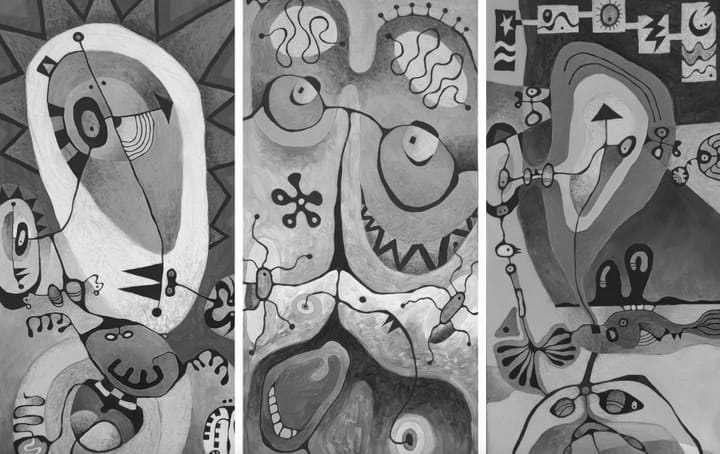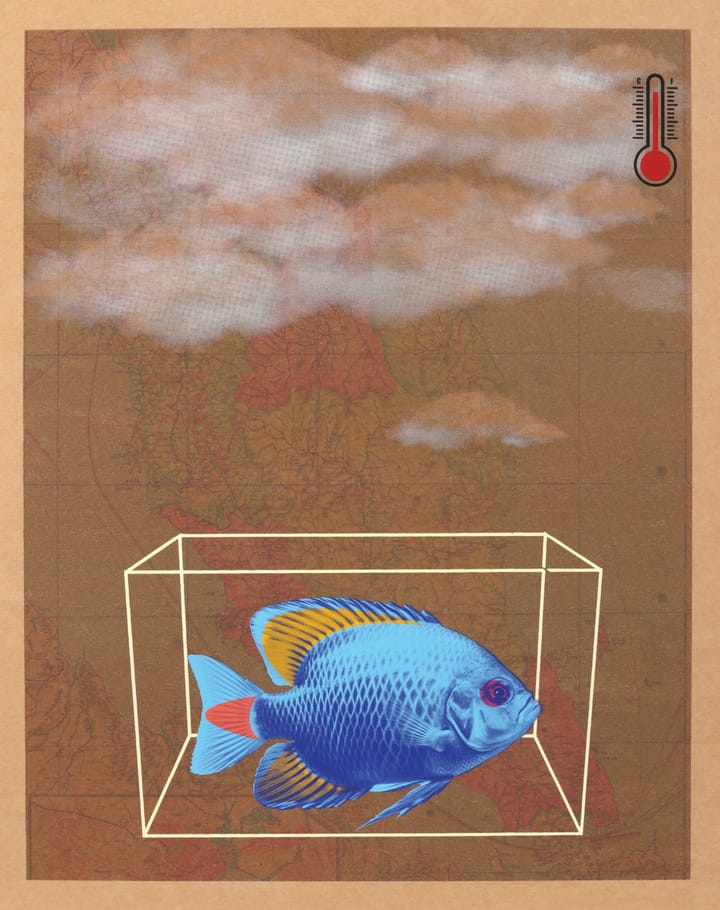Miroesque?
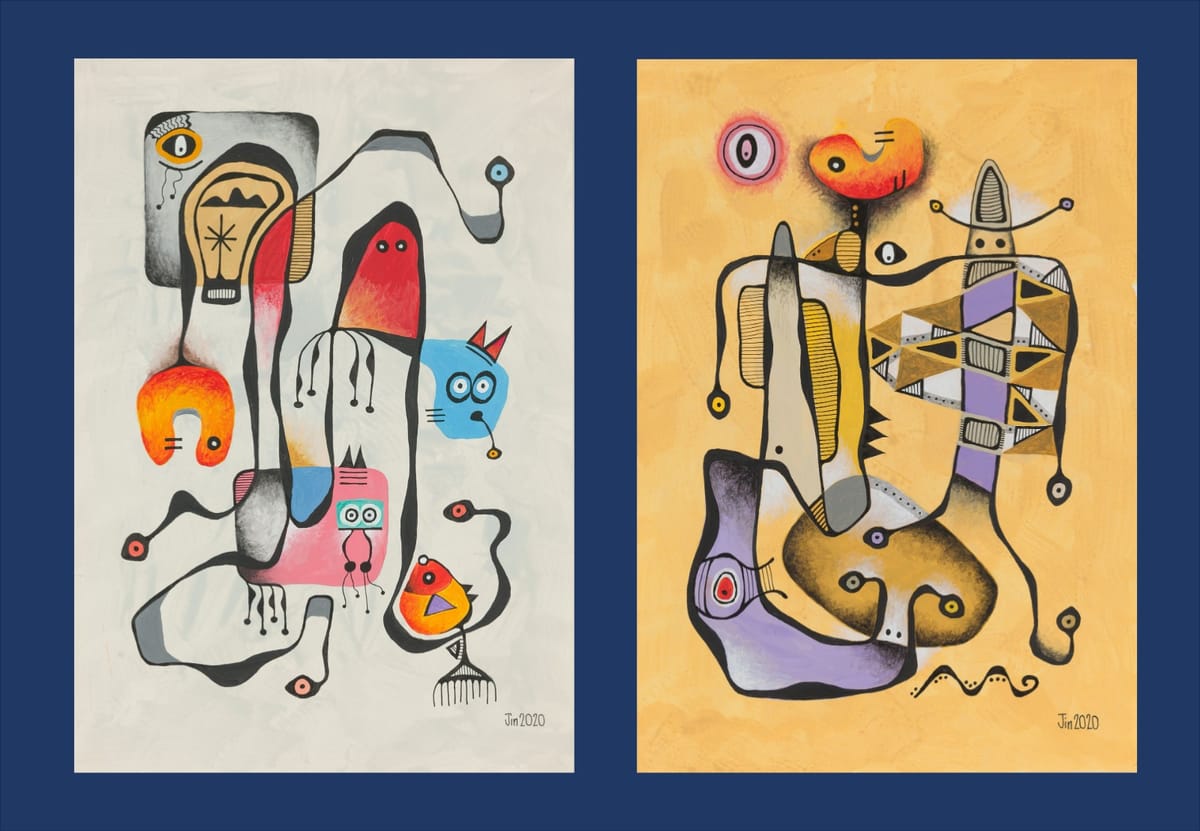
SOMEONE asked me if I was influenced by Joan Miró. I said he was one of my favourite artists: Many of his forms are abstract and playful; he used bold, primary colours; there are surreal, dreamlike elements in his pieces; and whimsical lines and organic shapes form a major part of his art.
Anyway, I didn't set out to copy anyone. Artistic styles are means to achieve what sociologist Max Weber call “verstehen”:
Max Weber used verstehen, a German term meaning “to understand,” to emphasise the importance of interpreting social action through the subjective meanings individuals attach to their behaviour. For Weber, to truly explain human action, one must grasp not just the external behavior, but the internal motivations behind it. This idea aligns with the notion that “to do is to understand”: by placing oneself in the actor’s position, even imaginatively, the sociologist gains insight into the motives, values, and context shaping the action. Verstehen thus bridges empathy and analysis, making social science more interpretive than purely objective or mechanistic.
In the 1970s and 1980s, I set out to understand artists like Picasso, Dali, Van Gogh, Matisse and Cezanne. My Dali verstehen exercise, for example, took me to The Yawn.
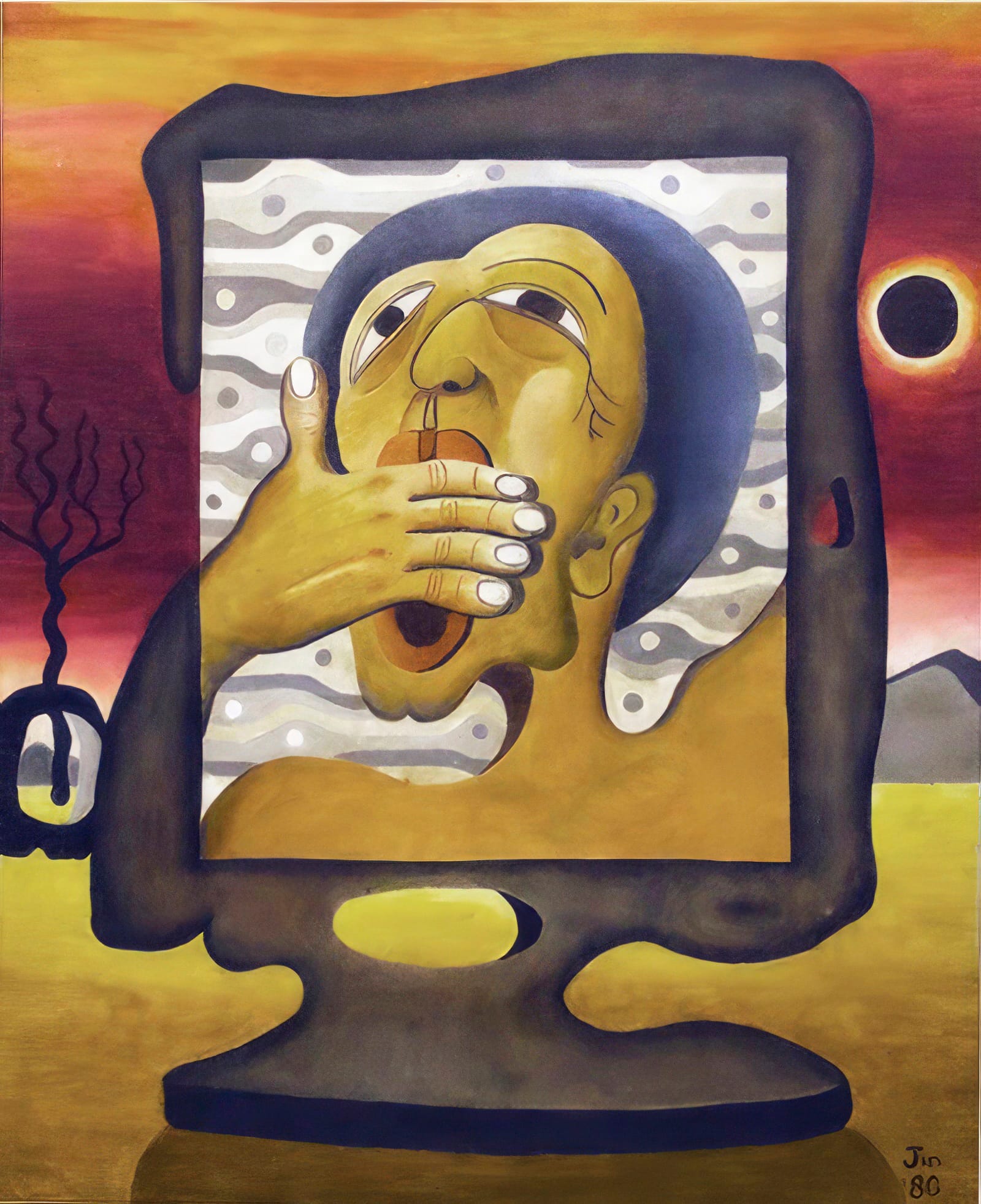
Similarly, my exploration of Cezanne and Van Gogh led me to Still Life with Money Plant.
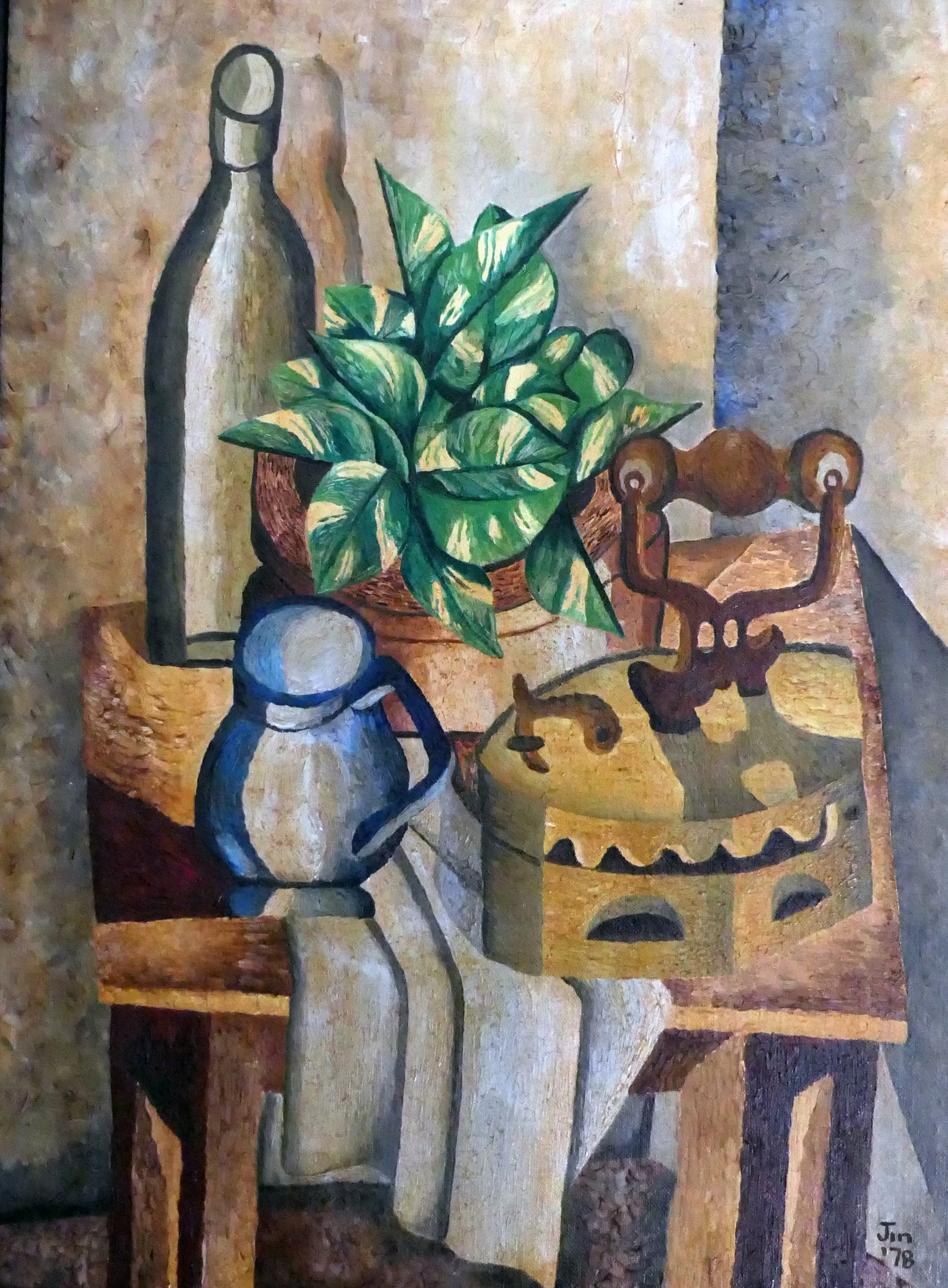
In short, I have been learning from the masters without copying anyone. The idea was to see what can emerge when their various techniques, ideas and forms, via verstehen, are mixed with how I feel, my thoughts, etc.
Man with Dog, Hog and Fish and Shoulder to Lean On have been featured in my first solo. Read here. They will appear again in another exhibition starting this weekend called “mirror, mirror on the wall, who is the ...... of them all?”:
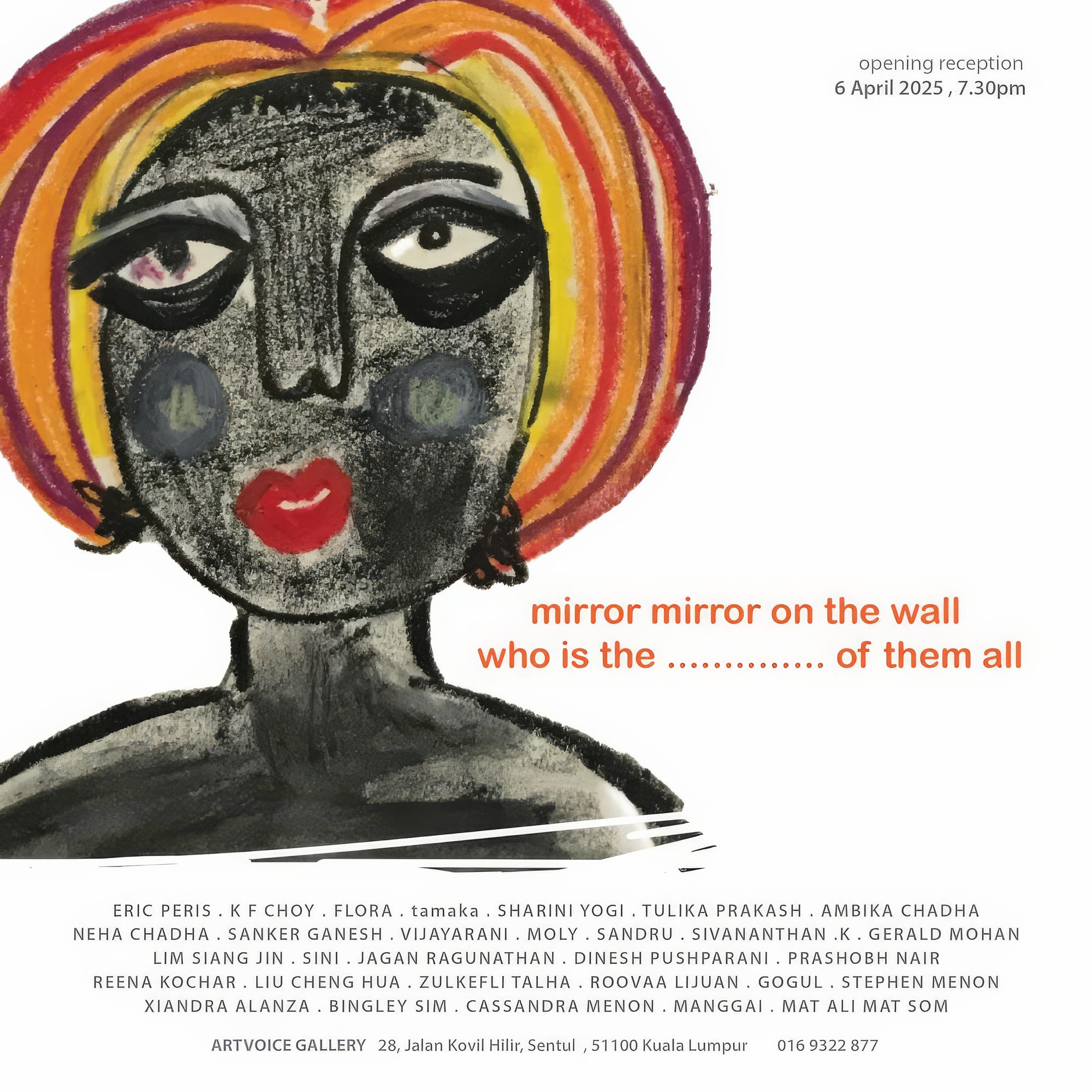
Do come and have a look.
